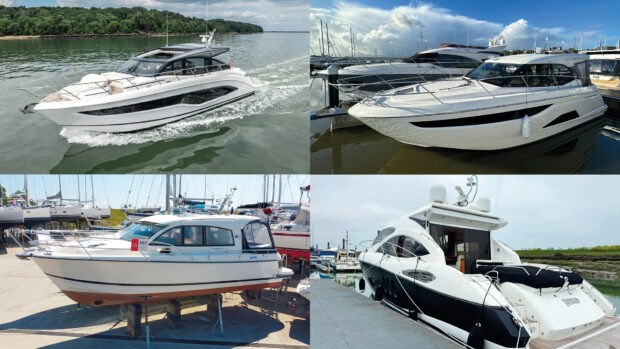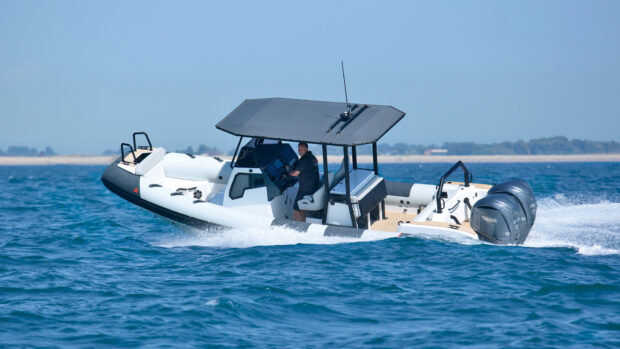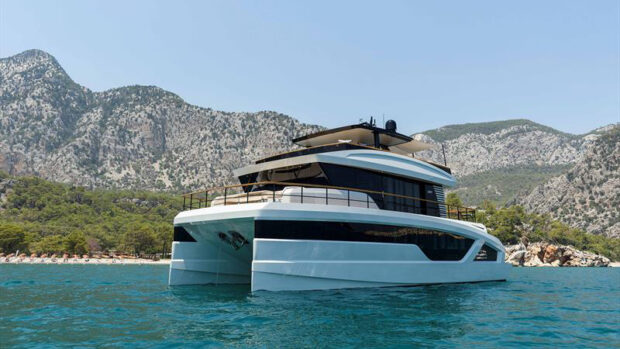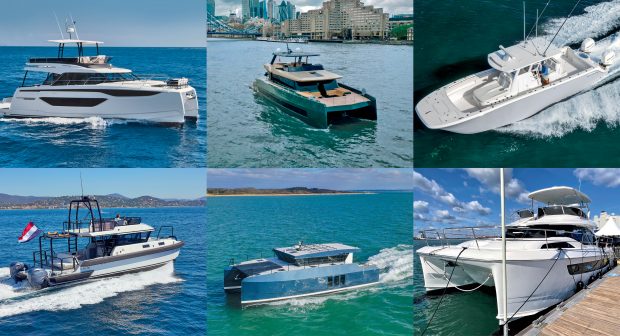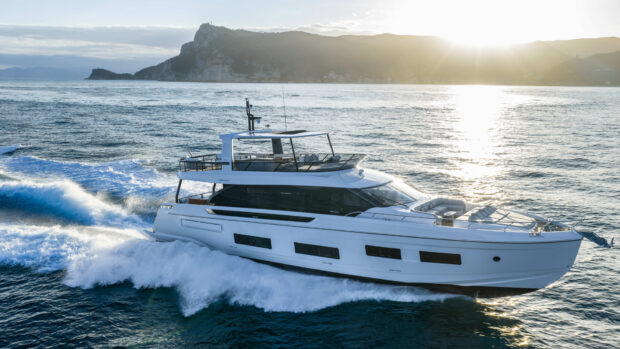The new Dometic DG3 claims to offer all the advantages of a compact gyro stabiliser without the drawbacks. Hugo Andreae takes a closer look
Until recently, if you wanted to fit a gyro stabiliser to a sub-40ft boat there was only one place to go – Seakeeper. Its compact Seakeeper 3 model was the only gyro small enough and light enough to fit on this size of planing boat and thanks to its DC motor, it could be run off the craft’s existing 12V circuitry rather than a separate AC generator.
Now, however, the market for compact stabiliser systems is turning into a veritable battleground as other marine equipment manufacturers jump on the gyro bandwagon.
Italian company Quick was first to respond with a range of new MC² gyro stabilisers for boats as small as 30ft and now Dometic is joining the fray with a brand new gyro of its own. Called the Dometic DG3, it is aimed at exactly the same 35-41ft boat sector as the Seakeeper 3 and Quick MC² 10 but claims to offer a number of significant benefits over its immediate rivals, including a faster spool-up time, reduced power draw and lower maintenance costs.

Dometic’s DG3 stabiliser is almost maintenance-free and backed by a three-year warranty
Low power consumption
The key to the Dometic DG3’s performance is a heavier but slower spinning flywheel that generates the same stabilising force as a Seakeeper 3 (3,000 N-M-S) without the extreme high speeds and the stresses this puts on the bearings and bushings.
Nor does it need to be encased in a high pressure vacuum sphere as the DG3’s flywheel is only spinning at 4,700rpm, rather than the Seakeeper’s 8,450rpm, so air resistance isn’t a major issue. This helps offset the extra weight of the DG3’s larger flywheel and makes maintenance much easier.
Article continues below…

MC2 by Quick Group: The ultimate stability one-stop shop…

Seakeeper 3
The second big innovation is the adoption of all-electric ‘roller screw’ technology, rather than a hydraulic ram, to swing the flywheel back and forth and generate the correcting forces that stop the boat rolling from side to side. This is said to have a number of benefits – by removing the need for high pressure hoses and seals, it reduces the chance of leaks and negates the need for hydraulic fluid changes. It also enables the push-pull forces on the ram to be recaptured and used to generate electrical current.

It can be controlled by most modern MFDs
Fast spool-up
The final part of the equation is a powerful 48V lithium-ion battery. This is what provides the compact brushless electric motor with the power to spool up that big flywheel so quickly. It can reach its maximum RPM in just 16.5 minutes (a Seakeeper 3 takes 50 minutes), and starts to provide meaningful stabilisation in as little as 9.5 minutes (29 minutes for the Seakeeper).
The motor can also act as a generator when spooling down the flywheel, helping it to recover energy that would otherwise be lost as heat and bringing it to a halt much faster. The spool down time is just 20 minutes instead of three hours or more for rival gyros – handy if you want to sleep without the hum of a gyro.
Another clever side effect is that the battery acts as a buffer between the boat’s main electrical system and the gyro so the alternators of the boat’s engines are recharging the 48V battery rather than driving the gyro itself. This means that it’s compatible with 12V, 24V and 48V systems with minimal adaptation.

The DG3 is the same size as a Seakeeper 3
Reduced servicing
A new type of heavy-duty bearing, featuring patent-pending cooling of the inner race and a corrosion-resistant titanium heat exchanger, is said to be so effective that the bearings should last the lifetime of the product. In fact, other than visual inspections, clearing the sea strainer and descaling and winterising the raw water side of the cooling system, the DG3 is designed to be maintenance-free for life. There’s also a comprehensive three-year, 3,000-hour warranty.
The result of all this development work is a new gyro stabiliser with almost the exact same physical dimensions and weight of a Seakeeper 3, and the same theoretical ability to stabilise a 35-41ft craft underway as well as at anchor but with fewer servicing requirements and a power draw of just 260-750W (depending on how hard it’s working to counteract the sea conditions). One scenario where it’s said to be particularly effective is quelling small to moderate swells due to the speed and precision of its all-electric precession actuator.
Dometic DG3 verdict
Whether the Dometic DG3 lives up to all these claims remains to be seen. In practice, the software that monitors the sea state and controls the gyro is just as important as the hardware itself when it comes to delivering a comfortable, seasick-free ride. Seakeeper also has years of real-world data and a slight price advantage ($39,300 vs $43,999) in its favour.
Testing and feedback will help decide who wins this battle but whatever the outcome, three major players competing for your custom can only be a good thing for boat owners.
 If you enjoyed this….
If you enjoyed this….
Motor Boat & Yachting is the world’s leading magazine for Motoryacht enthusiasts. Every month we have inspirational adventures and practical features to help you realise your sailing dreams, as well as tests and news of all the latest motorboats.
Plus you’ll get our quarterly Custom Yachting supplement where we share the last on offer in the superyacht world and at the luxury end of the market.
Build your knowledge with a subscription delivered to your door. See our latest offers and save at least 30% off the cover price.
Note: We may earn a commission when you buy through links on our site, at no extra cost to you. This doesn’t affect our editorial independence.



 If you enjoyed this….
If you enjoyed this….

